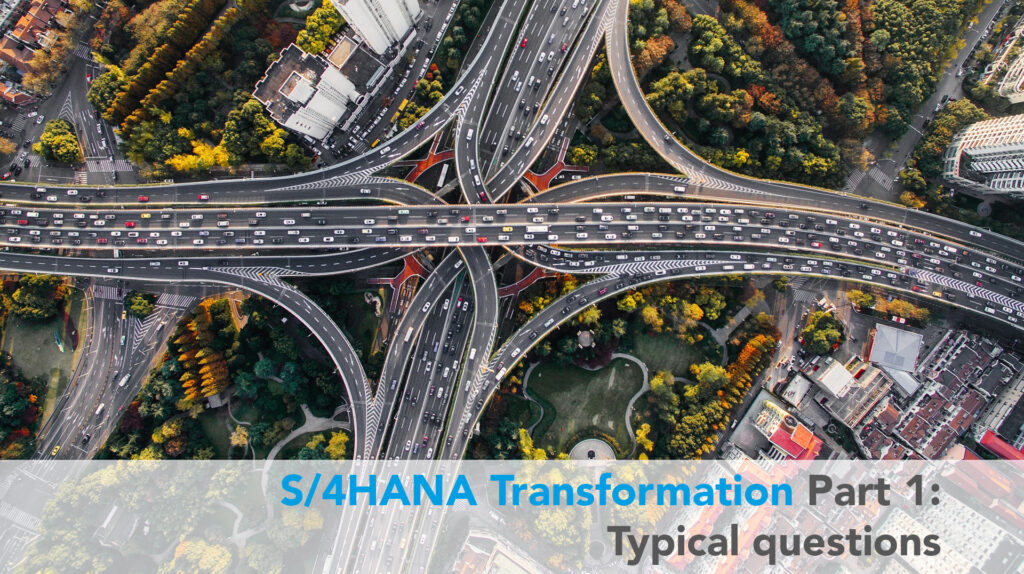
Cengiz Varol

Jan Hendrik Henke
Introduction
The transformation from SAP ECC to SAP S/4HANA presents companies with a series of specific questions and challenges. Indeed, the switch from ECC to S/4HANA is often a complex process – one that must be carefully planned and executed for success.
Here are some of the core challenges and questions:
- Strategic planning and roadmapping: Deciding between a new implementation (Greenfield approach) or a system conversion (Brownfield approach). Weighing up which strategy best aligns with business goals and existing processes.
- Business process adjustment: Reviewing and possibly redesigning existing business processes to make best use of the enhanced functionalities and best practices of S/4HANA.
- Data migration and data management: Ensuring data integrity and quality during the migration. Making decisions about archiving old data and cleaning up data sets.
- Customisation and reduction of custom code: Analysing and cleaning up existing custom code. Many custom developments necessary in ECC might be redundant in S/4HANA or can be replaced with standard functions.
- Integration and interoperability: Ensuring S/4HANA integrates smoothly with other systems and applications, both within and outside the SAP ecosystem.
- Training and change management: Preparing employees for new processes and adapting to the new user interface. Implementing change management measures to help employees learn about and effectively use the new system.
- Technical challenges: Adjusting IT infrastructure, as S/4HANA runs exclusively on the SAP HANA database, which requires specific hardware and software. Here, the opportunity arises to switch to SAP RISE or GROWTH options.
- Compliance and security: Ensuring that the new system meets regulatory requirements and security standards.
- Budgeting and cost control: Controlling costs associated with the migration, including fees for consulting, licensing, training, and implementation.
- Ongoing support and maintenance: Planning for ongoing support and maintenance of the S/4HANA system post-implementation.
Tackling these challenges requires thorough preparation, strategic planning, and the hard work and commitment of an experienced implementation team. It’s important for companies to carefully evaluate their specific needs and goals to ensure a smooth transition.
Our previous experience shows that many companies initially concentrate on a “technical” transformation, deferring opportunities for optimisation, essential process changes, and innovations to a later stage, unless they present an immediate benefit.
Do you agree with the points above, or do you think any are missing?
In this first article, we looked at the topics and issues that should be considered prior to implementation. In future articles, we’ll explain how to tackle these issues systematically and achieve a successful transformation using our project methodology.
Interested?
Interested in learning more about S/4HANA Transformation? Get in touch with us to find out more.
S/4HANA Transformation (2) – The right project methodology
In the second part of our series of articles on S/4 transformation, we present our tried-and-tested project method. This approach, which is divided into six phases, ensures a structured approach to the implementation
S/4HANA Transformation (3) – Details and tips
In our third part of our series of articles on S/4 transformation, we go into more detail and provide tips and tricks from past successfully implemented S/4HANA transformation projects.
S/4HANA Transformation (4) – Our service
In our fourth part of our series of articles on S/4 transformation, we show what our service entails and how we can help to create a successful project using our structured and tested method of approaching a transition.


